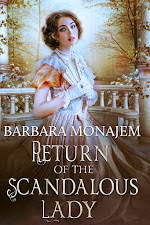I had great plans for this blog about butter pie. I even had alternate plans in case the butter pie thing didn't fly. No go.
I've wanted to try butter pie for years, ever since Paul McCartney mentioned it in the song "Uncle Albert/Admiral Halsey." A few years ago, I actually went to Lancashire, England, the home of butter pie, but unfortunately, I forgot about butter pie until we were leaving Lancashire. Dumb, completely dumb, but I was totally absorbed in visiting friends and historic sites and such, and getting to try mushy peas (absolute heaven if you're a pea freak like me). Now I'm writing a historical with a heroine from Lancashire, and there's a kitchen scene where she's baking…
No, not butter pie. When I first posted this blog on the Pink Fuzzies, she was making treacle tart, Harry Potter's fave dessert, because it's not a mealtime scene, and she's a lady and wouldn't be likely to make a meal anyway. She's stretching it being in the kitchen at all. (Afterward I decided she should make the Lancashire specialty, Eccles Cakes -- hence the blog of a few weeks ago -- although when all's said and done she'll probably be making Chorley Cakes, or nothing at all). Anyway. She and various other characters are drinking café-au-lait and discussing the French Revolution, and butter pie just didn't work. Still, my heroine and her pastry reminded me about butter pie, so I thought I'd finally make it myself… maybe mention it in this story or another… post about it on a blog.
Butter pie, as I understand it, is a potato and onion pie and a Lancashire specialty. It was or is commonly eaten on Fridays when Catholics don't eat meat. Well... I'm something of a pastry freak. I'll eat almost anything if it's enclosed in pastry, and since I also love potatoes and butter, and onions go with everything… I thought, perfect!
Recipes for butter pie seem to be few and far between, so I glanced over the only one I could find and altered it to suit my tastes and what I had in my pantry.
It didn't work. It was edible, but not very good. My fault, probably, for altering before trying the original, but I was in a hurry. It needed a lot of Worcestershire Sauce or HP Sauce or ketchup to make it tolerable. A little sauce, I'm fine with. A lot means there's a problem. I'm not posting the recipe today, and I'm going to try again. And again until I get it right, even if I have to go back to Lancashire and find a cook who knows how to make fabulous butter pie. Oh, the sacrifices one has to make!
The backup plan was to make treacle tart, but apparently I need golden syrup, which my local supermarket doesn't carry. I know where to look, but I haven't had time. So scratch that idea, too.
Bottom line: here's a recipe for Cranberry Bread with my usual notes and options:
2 c. whole wheat pastry flour (you can use all-purpose if you want)
1 c. brown sugar (you can use white if you must)
1.5 tsp. baking powder
1 tsp. salt (or a little less)
1/2 tsp. soda
1/4 cup soft butter
Rind of an orange, grated. About a teaspoon is right, unless you love the bitter orange flavor. Lemon rind is okay, too. Or you can skip the rind thing entirely.
3/4 cup orange juice. I've also used grape juice or a combo of grape and orange.
1 egg, beaten
1 cup chopped fresh cranberries. I think dried cranberries or raisins would do, but I haven't tried them. You might have to adjust the liquid a little, because fresh cranberries contain some juice.
½ cup chopped walnuts or other nuts
Mix the dry ingredients. Add the butter until blended. Mix the peel/juice/egg together and add to the dry ingredients. Do not over-mix. Add the cranberries and nuts. Bake in a greased loaf pan at 350 degrees for about one hour. It slices better if you let it cool for several hours.
Onward to butter pie!

.jpg)
































.jpg)













